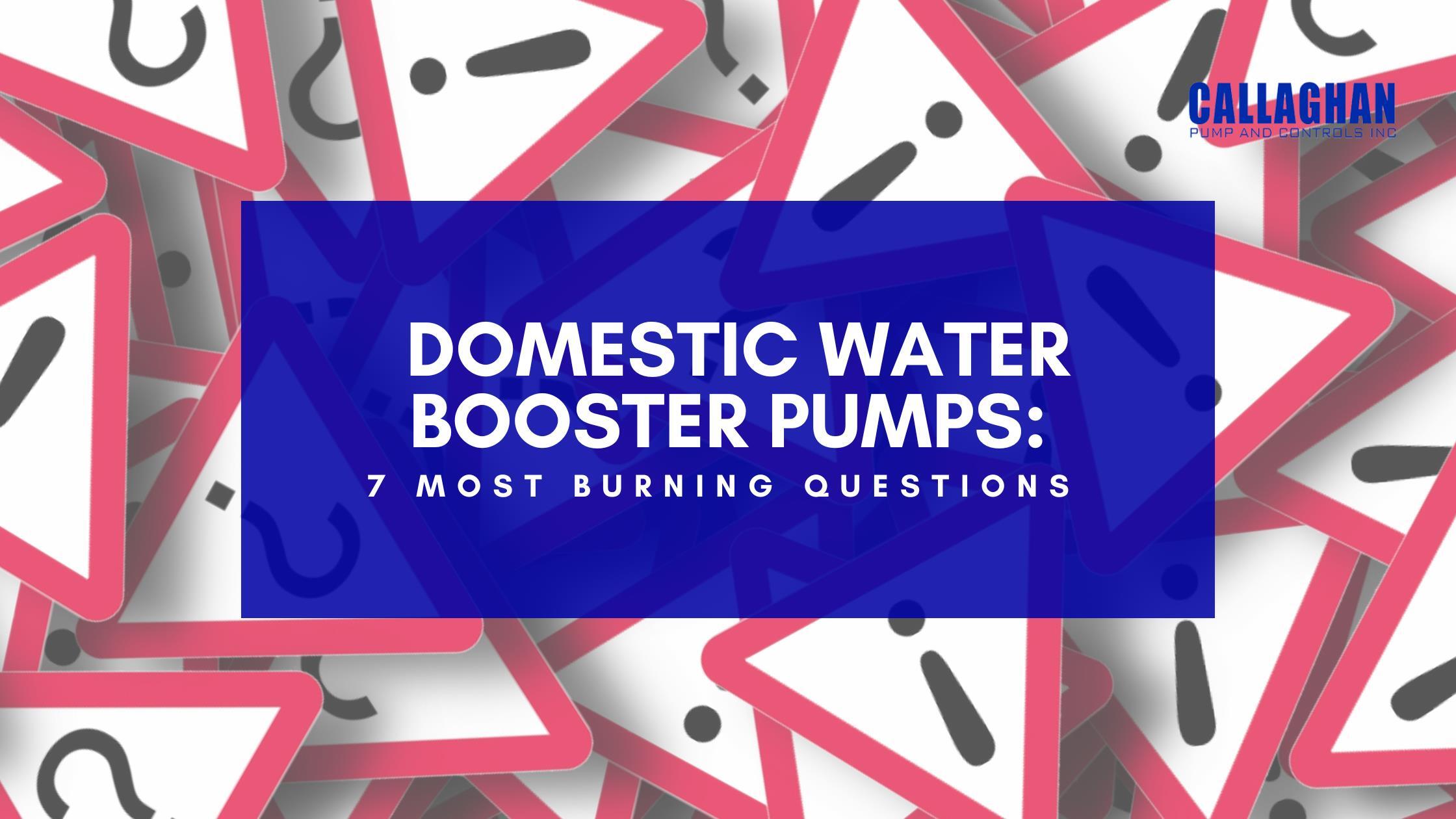
January 16th, 2023
You may have heard of domestic water booster pumps and how they increase low water pressure and flow in a building, but how much do you actually know about them? If you are planning to install one, then this blog post is going to be extremely helpful. This is because it contains some of the most commonly asked questions about booster pumps for homes. So, let’s get started!
As we mentioned before, most water booster pumps are designed to increase low water pressure. They are common in high-rise buildings that often experience low water pressure due to gravity. The role of a booster pump is to create and provide that extra boost needed to raise the water pressure to the desired level.
Most domestic water booster pumps are centrifugal pumps, as they take water from a source and move it through a single stage or multiple impellers to increase the water pressure. They function like a fan with blades that rotate to boost the airflow. With the help of impellers, the pump increases pressure in the same way.
The main components of a booster pump include an engine, impeller, inlet and outlet, pressure sensing device, and casing. While booster pumps vary depending on how they move water, some of them use a rotating propeller and others use an oscillating diaphragm.
A booster pump is recommended when there is low water pressure, especially if it is not caused by a leak, clog, or any plumbing issue. You should know what your water flow rate is and how much water your household uses. If you have a large house, you may need to consider a powerful booster pump to meet your water pressure needs.
There are different booster pump types suitable for different applications. For instance, single-stage booster pumps are great for detached houses or residents with moderate pressure requirements. When the requirements are high, multi-stage booster pumps are better. These requirements may include pumping water uphill, transporting water through very long pipelines, or maintaining the city main water.
If you look at domestic water pumps, they are ideal for increasing water pressure throughout a house. They can be used to increase the flow from a low recovery well to your home. However, before you decide on any water pump type, you should know what the flow rate of your water is. Consider all fixtures and measure how many gallons of water you will need per minute.
A booster pump should be installed right where you need to move water from. For instance, in a household with low water pressure, install the pump on the main line where water enters the building. Be sure to have a bypass for any pump malfunctions. It will allow you to isolate the pump if you need to troubleshoot it.
Also, it is important to test the pump before connecting it to the pipeline. This is because plumbing issues like leaks may cause the pump to cycle due to a low flow rate. This may result in starting and stopping the pump in rapid succession. If you see a leak, isolate the pump and test it to assure that the pump is not the problem.
To size a water booster pump for your building, you need to ask these questions: Is it a multi-story building? Do you want to move the water a significant distance? How far away is the water source?
Water booster pumps with a single impeller are not good enough at drawing water from a significant distance. If you want to lift water from a lake for irrigation, then you need something with more horsepower and impellers.
To keep your booster pumps for homes quiet, you need to factor in the type of pump installed, the power source, and the materials around the installation. In fact, the way you install the pump can minimize or maximize the noise. So, be careful and hire a professional when it comes to installing and sizing booster pumps. Avoid installing it directly to copper lines.
So, these are the most basic questions about water booster pumps, answered by an experienced team of pump professionals. If you want to learn more or have any queries regarding booster pumps for homes, talk to us directly.
john@callaghanpump.com,
eileen@callaghanpump.com,
dan@callaghanpump.com,
sales@callaghanpump.com,
service@callaghanpump.com












